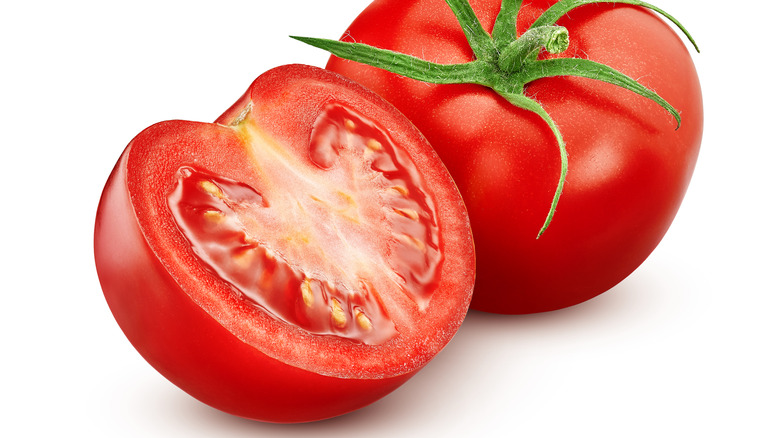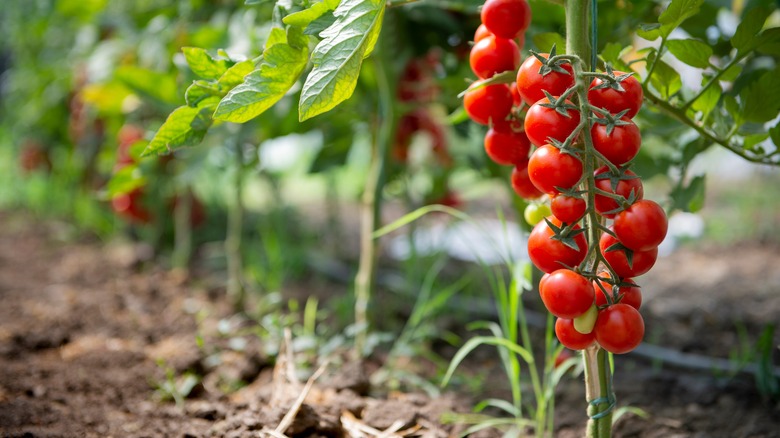The Reason Some Tomatoes Have A White Ring Inside
Have you ever cut into a tomato and been perplexed to see a white ring? It's easy to assume that the white stuff is mold, but that may not always be the case. One of the primary causes of a white ring is a potassium deficiency in the soil when the tomato is growing. It's important to have an adequate concentration of potassium because, without it, the fruits may not absorb enough magnesium and calcium to properly ripen. As a result, you may get a white ring, white fruit, or an orange shoulder.
However, too much sun exposure can also lead to your tomato growing with pale tissue. If the fruits are left out in the open at temperatures higher than 85 degrees Fahrenheit, they may turn white or yellow, and some areas may end up being dry or shriveled. This can happen if their leaves are pruned excessively, leaving the fruits without proper shade. When growing tomatoes are exposed to too much heat, they have a hard time growing lycopene, the chemical that gives them their signature red hue. In these cases, the stalks will typically stay yellow or green as well.
Potassium deficiencies in soil can cause white rings in tomatoes
There are a few other reasons why you may see white flesh inside your tomatoes. If stink bugs, beetles, spider mites, and other bugs get under the fruits' skin and start feeding, they'll suck out the juice and insert their saliva, leading to a white spot rather than a white ring. In serious cases, the fungus Alternaria solani can cause the plant's leaves to fall, leaving the fruit open to sun exposure.
But more often than not, discoloration in tomatoes is caused by a lack of nutrients. A calcium deficiency may also show up as what's called a blossom-end rot when the bottom of the fruit looks black or brown. Typically, these tomatoes don't make it to grocery store shelves since the blight is obvious. To try to avoid this, farmers may add calcium-rich substances like eggshells and bone meal to their soil.
The good news is that if you spot a white ring inside your tomato caused by a potassium deficiency in the soil, it's typically safe to eat and can simply be removed by cutting, per Toronto Master Gardeners. If you suspect insects have entered your fruit, however, you may want to toss it.

